When British Royalty took FASHION to the French! How the Queen Mother’s dramatic white outfits rescued a vital State Visit – and single-handedly revived the parasol industry
When the British Royal Family brought FASHION to the French! How the Queen Mother’s dramatic white outfits saved a major state visit – and single-handedly revived the parasol industry
- When the British court was plunged into mourning, they had an ingenious plan
- As the storm clouds gathered over Europe, the Queen Mother glittered in white
- For all the latest Royal news, photos and videos, click here
There have been many state visits to France, but one of the most memorable took place on the eve of war – and it was thanks to the late Queen Mother’s sensational fashion choice.
George VI and Queen Elizabeth were scheduled to leave for Paris on June 28, 1938, but five days earlier the Queen’s mother, Lady Strathmore, died of a heart attack.
The visit was crucial in boosting the Anglo-French alliance as the threat of war with Nazi Germany loomed and the British government was determined to proceed.
The tour was postponed until July 19, but the thorny issue of royal mourning remained.
Mary Queen of Scots in mourning white after the death of her husband Francois II, King of France. It would prove a useful precedent for Queen Elizabeth, the Queen Mother
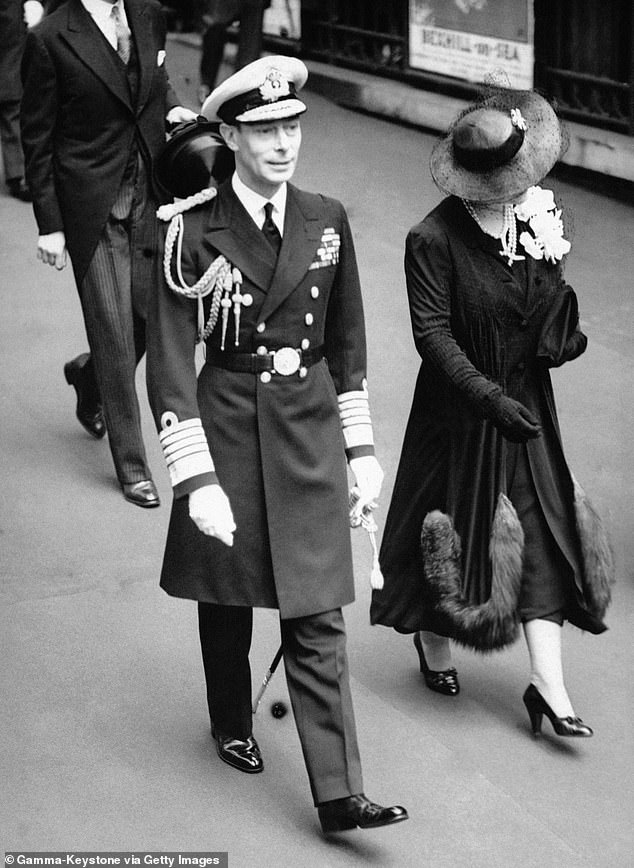
King George VI and Queen Elizabeth left for Paris in July 1938. The queen left for Paris in black, but arrived in Paris in mourning white
Black or purple designs would create a gloomy image rather than something cheerful and challenging. It was the royal couturier, Norman Hartnell, who came up with the solution.
White, he emphasized, is an accepted color of mourning.
Mary Queen of Scots wore white – and deuil blanc – after the death of her first husband, Francis II of France.
Queen Victoria insisted that the coffin be draped in white at her funeral, which she saw as a reunion with her beloved Prince Albert.
Although he was responsible for the color, Hartnell credited King George as the inspiration for the style.
The king took the designer to view Winterhalter’s paintings of Empress Eugėnie of France and Empress Elizabeth of Austria, saying this is what he wanted the queen to look like.
Hartnell called it the ‘royal renaissance of the romantic crinoline’ and set to work creating a dozen white designs at breakneck speed.
It helped that white materials were easier to use “because no matching materials are needed and there is no special painting to cause delays.”
The Queen left London dressed in the deepest mourning, but emerged from the train in Paris in dazzling white. Hartnell’s favorites included the flowing dress of “hundreds of yards of Valenciennes lace, sprinkled with silver” for a reception at the Elysée Palace. He was also fond of “a flowing dress of thick white satin” worn at the opera.
The most praised design was the fairy dress worn at a garden party in Bagatelle. “It was of the finest spiderweb lace and tulle,” he recalled, “and it was worn with a wide hat, delicately edged with white osprey.”
She also carried a parasol of transparent lace and tulle, and when she opened it to protect herself from the sun, she “at once brought back to life the art of the parasol makers of Paris and London.”
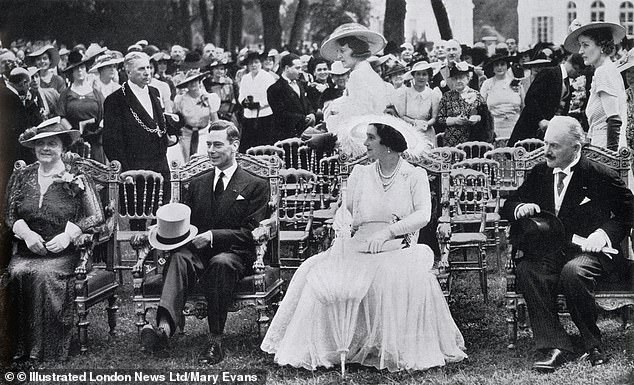
The King and Queen, together with President Lebrun and Madame Lebrun, attend a garden party at the Bagatelle held in their honor in Paris, 1938
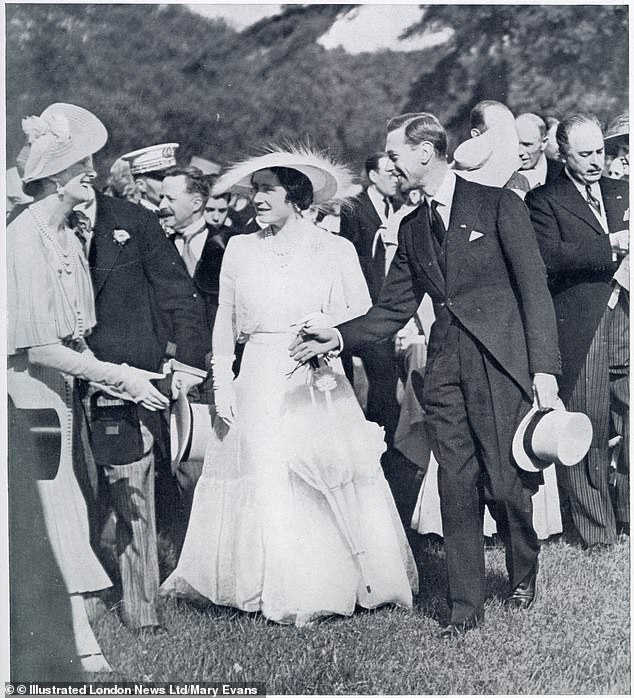
The queen carried a parasol of transparent lace and tulle and opened it for protection from the sun. ‘In one fell swoop she brought the art of the parasol makers from Paris and London back to life’
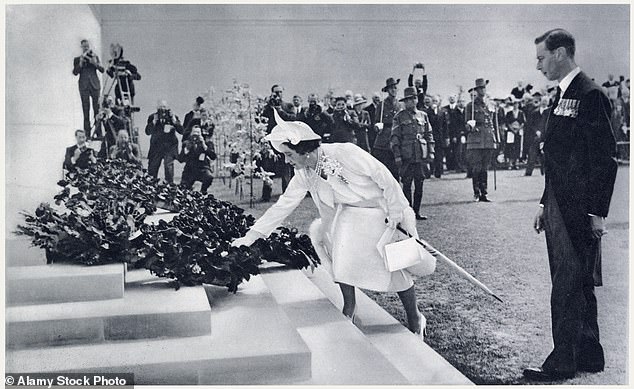
Queen Elizabeth placed a poppy on the wreath previously laid by the King at the Australian War Memorial during their state visit to Paris in 1938
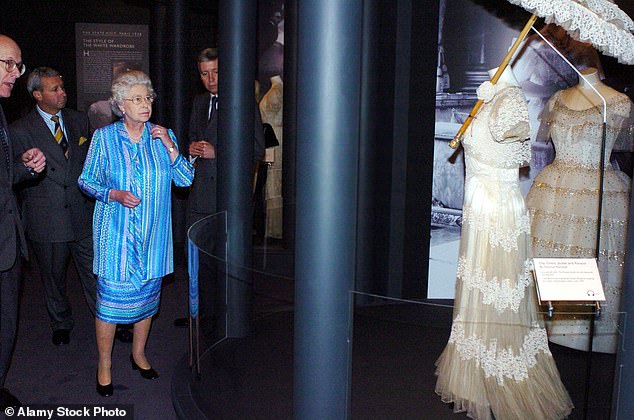
Queen Elizabeth II admired her mother’s elegant mourning wardrobe during the 1938 state visit to Paris for a special exhibition celebrating the summer opening of Buckingham Palace
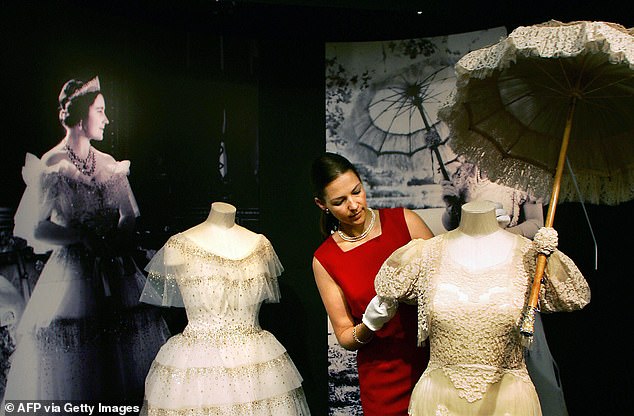
Caroline de Guitaut, assistant curator of works of art, adjusts the ‘day dress’ during the preview of Queen Elizabeth’s white wardrobe, Paris 1938
The fashion-conscious Parisians showered the chic queen with praise. An excited French diplomat exclaimed: “Today France is a monarchy again. We hold the Queen in our hearts. She rules over two nations.”
The stunning creations are still in the Royal Collection and formed the special exhibition at the 2005 Summer Opening of Buckingham Palace.
Official photographs of the Queen in the same crinolines were taken by Cecil Beaton the following summer and became the defining image of Queen Elizabeth at the start of the Second World War.
